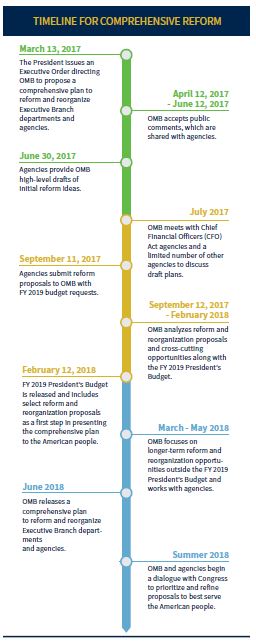 Communication on federal agency reform frequently makes the assumption that the basics of a fed overhaul are known. Largely, I believe, this is not the case. This lack of a bird’s-eye view on the 5 Ws contributes to “job fragility” — the notion that at any moment the Big Bad Wolf can descend upon us, blowing our agencies down to remnants of their former selves.
Communication on federal agency reform frequently makes the assumption that the basics of a fed overhaul are known. Largely, I believe, this is not the case. This lack of a bird’s-eye view on the 5 Ws contributes to “job fragility” — the notion that at any moment the Big Bad Wolf can descend upon us, blowing our agencies down to remnants of their former selves.
Now, I’m not relaying that this wolf is a person, place, or thing. But it does exist — this knowledge that things are rapidly changing within the federal agency environment and a pervasive notion that we should be concerned about the stability of our houses.
But it’s not OK to be afraid of the Big Bad Wolf. It’s just not. A legal framework drives any federal agency re-org, and information is aplenty if you look for it. And there are actions you can take to position yourself for the future (more on that next week). So let’s do a brief deep dive.
Identify Your Assumptions
The most important thing I’ve learned working for the federal government since, well, the ‘80s, is that you must always, always identify your assumptions. You’ve likely heard you need to challenge your assumptions, but that’s actually not the difficult part of the equation.
Identifying assumptions can be time-consuming. It can be an exercise in getting up close and personal with Captain Obvious. But, if done correctly, you’ll see the very specific facts that are driving your logic and conclusions on any topic. Because you can’t solve a problem or belay fears if you’re looking in the wrong direction for a solution. And once you’re on target with your assumptions, you’ll be building with brick versus straw.
Become a Researcher
A second rule of government employment: put significant effort into your own personal fact finding. This means becoming a good researcher. Learn the proper sources for the information you seek. You’ll amass an overwhelming amount of valid intel once you’ve perfected your Practical Pig.*
Circling back to the federal government, whether you believe structural re-orgs are the best way to improve the federal government, the only way you’re going to simmer Big Bad Wolf fears is to learn for yourself 1) the catalyst behind agency reform, and 2) responses to that catalyst.
Look Backward
Put another way, you can’t see where you’re going until you see where you’ve been.
Things kicked off March 13, 2017, with Executive Order (EO) 13781, “Comprehensive Plan for Reorganizing the Executive Branch.” Read this.
E.O. 13781 required agencies to submit to the Office of Management and Budget (OMB) Director within 180 days an initial response that included, as appropriate, a proposed agency re-organization plan to improve, “efficiency, effectiveness and accountability.”
In addition, following legal requirements the OMB Director solicited suggestions from the general public on how to best organize and run the executive branch. (Once received, these were to have been forwarded to agencies for consideration.)
“Delivering Government Solutions in the 21st Century Reform Plan and Reorganization Recommendations,” published in June, 2018, provided the resulting proposed path forward. Take a look at the Timeline for Comprehensive Reform included in this publication. Though backward looking when published, it outlined the legal path for the road we are on.
Recognize the Chain of Command
The thing is, in response to E.O. 13781, your leadership did not sit in oak-paneled rooms, smoke cigars, drink cognac and concoct the downfall of your agency (I’m fairly certain they did not.)
Instead, they likely worked hard to evaluate difficult human resources, operational and managerial decisions to yield the least negative impact on employees and on the agency’s mission.
As things move forward, remember that your agency’s leadership are following direction. Rule of thumb: you may be working for the U.S. Institute of Peace, but all federal agencies mirror the Defense Department in that a chain of command exists…remember, that chain extends well above your immediate agency leadership.
That’s all we have time for now. Drop in next week, when we’ll continue covering the basics of agency re-orgs, jump into some nitty gritty, and I’ll share why it’s a great time to believe in Martians.
* Warning: video contains corporal punishment
Your Weekly Buzzword: “Agency Priority Goal,” or “APG”
Agency Priority Goals (APG) are identified in the President’s Management Agenda. They include a title, e.g., “Combat the Opioid Epidemic,” and a statement, e.g., “By September 30, 2019, reduce the percentage of initial opioid prescriptions and duration of new opioid prescriptions for federal employees with work-related injuries by 30 percent from the FY 2016 baseline.”
You may also be interested in White House Details Proposal to Merge, Reorganize Agencies and
White House Details Plans Post Federal Hiring Freeze.
Cynthia Rimrodt Houston is part of the GovLoop Featured Contributor program, where we feature articles by government voices from all across the country (and world!). To see more Featured Contributor posts, click here.





Really interesting piece. I’m glad I’m familiar with APGs now- can’t wait for next week’s buzzword!